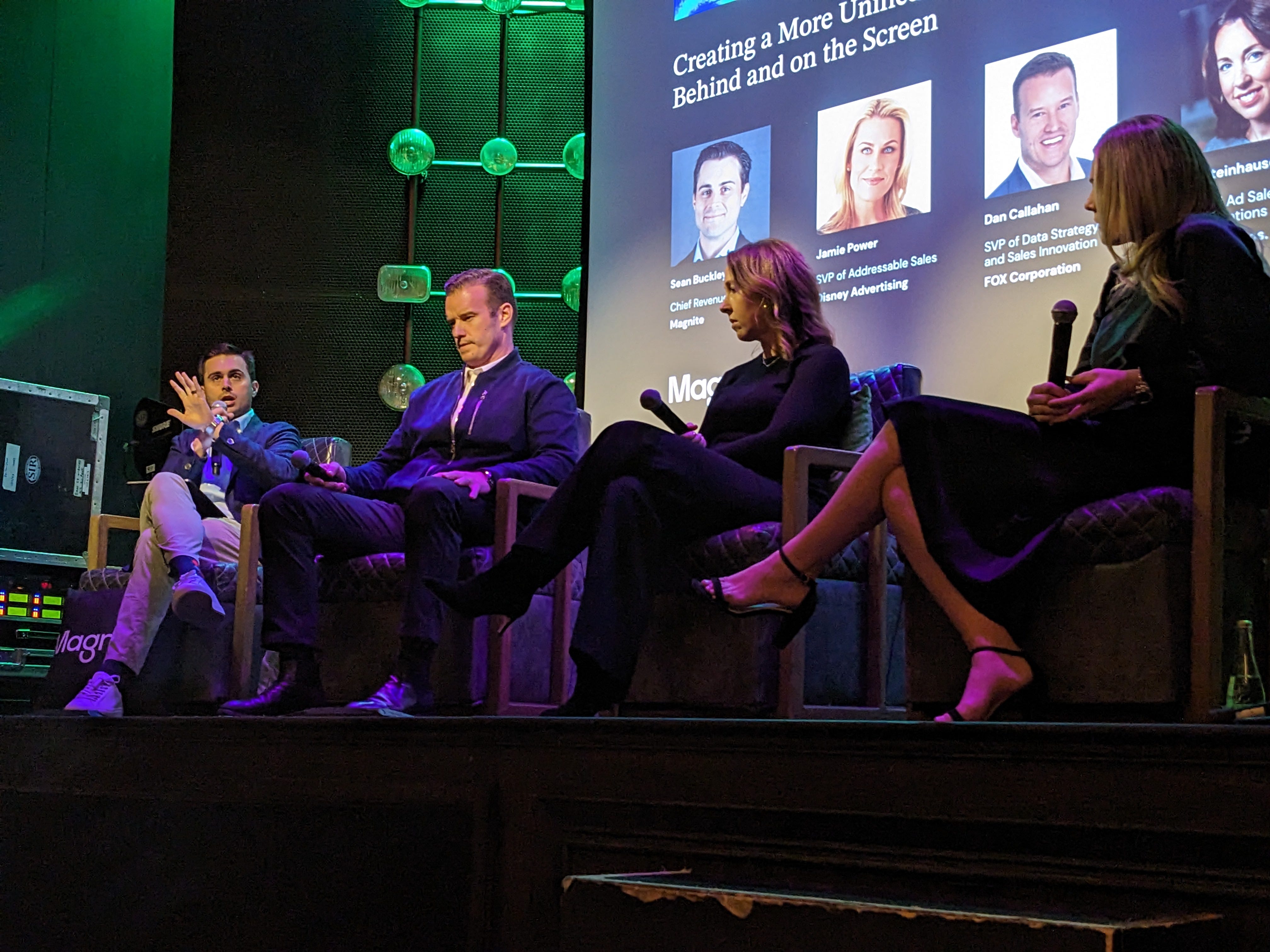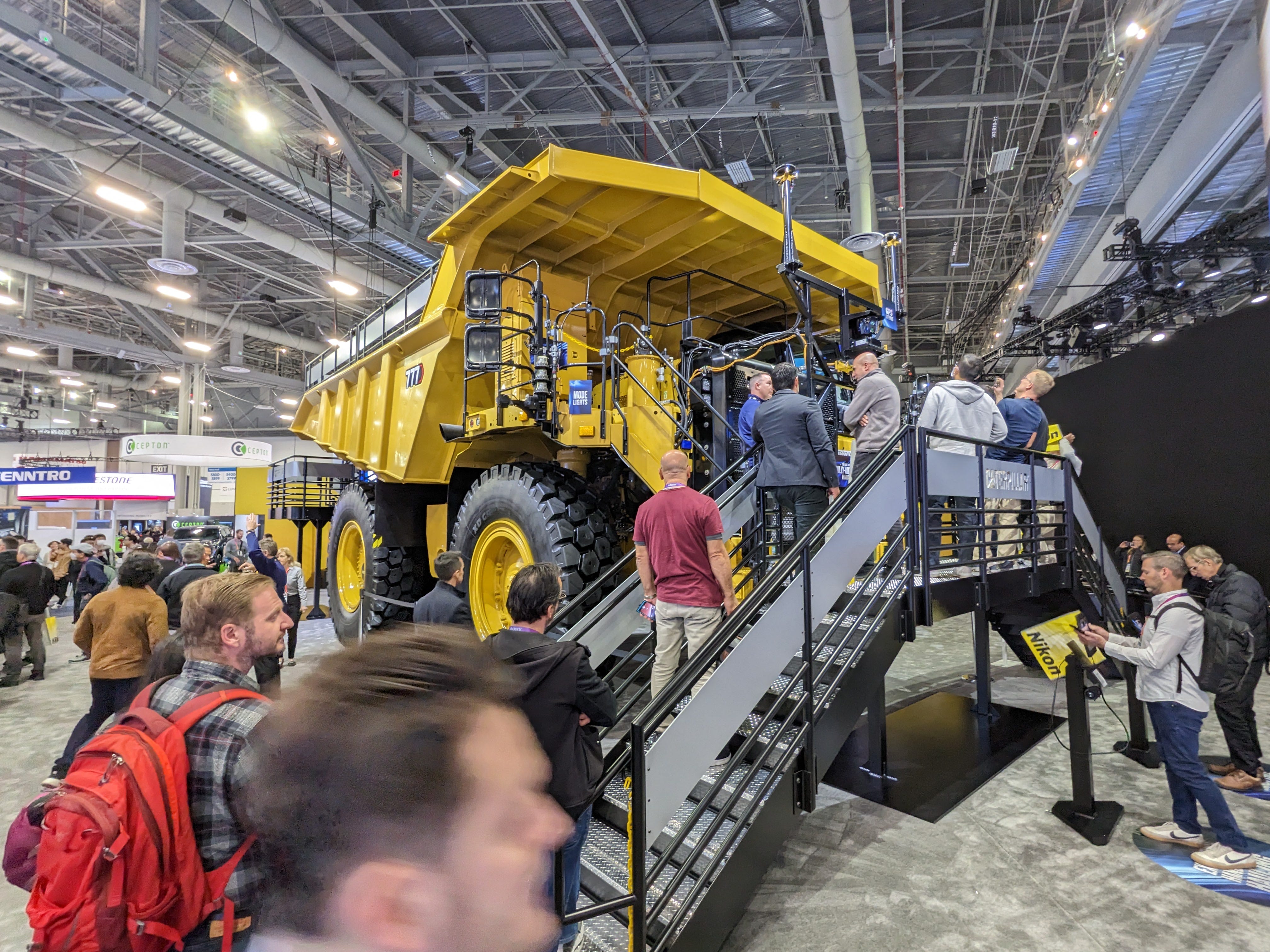
Return to the Nevada Desert #CES2023
It was a refreshing but different CES this year. Same trends, different attendance.
It was my first CES since 2019, and I was excited to be back. When planning my triumphant return to Las Vegas’ largest trade show, I did not know if it would still “be a thing” for the media business, but I registered anyway!
Attendance beat expectations with 115,000 attendees. (The original prediction was closer to 100,000.) That’s down from 185,000 in 2019 when I last attended. It was delightful! Still busy and exciting, but not a complete mob scene.
If you’ve never attended, here are a few interesting stats:
- 2.2 million square feet of trade show floor.
- 2,200+ vendors and booths to visit.
- Elon Musk’s Boring Company built a network of underground tunnels to get you from one end of the show to the other…in Teslas. (See video below)
CES is so big that it would take you about 45 minutes+ to walk each floor from end to end. That’s not stopping at any booths. Just walking through it at a brisk pace.
Advertising Biz + CES
For well over a decade, CES has been widely attended by the advertising and marketing industry. Like every “cool-kid event” from Sundance to Cannes, the ad mafia finds a reason to show up!
CES occurs early each January, which provides a great way to kick off a new year.
This year’s most prominent theme was biddable advanced television (i.e. CTV, OTT, addressable, programmatic, etc.)
There were so many ATV events, sessions, panels, and happy hours on the topic that it would be impossible to attend them all.
#Measurement was the week's buzzword despite being discussed in only the fluffiest of terms.
Biddable
The biddable and programmatic advanced TV was front and center. It is 100% the future, no doubt…if not the present. However, it struck me as odd that all the major TV networks and content owners bragged about the growth of automated buying in their supply chains.
How is all this inventory even available for bid? That was the nagging question in the back of my mind, so I decided to ask.

Magnite held a panel event with senior executives at Fox, Warner Bros Discovery, and Disney. During the Q&A, I raised my hand and asked:
The linear side of the TV marketplace has been suffering from major under-delivery challenges for years. Does that create more pressure for the streaming side of the house to make up for those shortfalls? Have you been asked to create more ad units, or add one more spot to a pod in order to chip away at makegoods?
Insert awkward pause.
Answering tough questions is not exactly what you expect when you’re in a room of 100+ people in Las Vegas, at a barbershop with a secret speakeasy in the back. But I had to ask.
In case you were wondering, I did not get a real answer. Instead, I got the standard “it is the consumer that matters, not the screen or device…” response. However, I think the point was made.
Thank you for reading AdLingo. This post is public so feel free to share it.
The market knows there is significant under-delivery of commitments in the linear TV business, and most of the networks are cleared to run the campaigns “fluidly” across all screen types and delivery channels. So how could there possibly be a meaningful amount of inventory left over for programmatic sales?
My hypothesis is that many networks would rather let under-delivery sit on the books and eventually expire while raking $50+ CPMs in through the programmatic door. It is only a theory, but it is supported by simple observations of the market.
Measurement
There are two kinds of measurement in advanced TV: operational measurement and audience measurement. Depending on who you talk two, both are a mess right now, but they should not be.
Operational measurements are the basics. Ad serving, impression counting, click tracking (mobile), viewability measurement, and ad fraud detection.
Audience measurement speaks to traditional TV buying metrics such as rating points, GRPs, cost-per-point, and audience delivery guarantees. Typically as measured by companies like Nielsen, and Comscore plus newer players like VideoAmp and Samba.
I had private meetings with the largest advanced TV platforms (without naming names) at CES to understand what measurements they allow and what they don’t.
My #1 takeaway was that brands are only getting 20-30% of the measurement available to them. In other words, full ad-serving metrics and audience measurement are available on all of the major platforms yet the brands are only receiving piecemeal reports.
For years, we’ve heard the battle cry that “brands need to demand better measurement!” How about taking advantage of the incredible data that’s already available? You just didn’t think (or know) to ask for it.
As an advertiser, you need to be proactive and ask for the data. It is there. Get it.
Why have you not seen it? There are far too many commercial disincentives in place to voluntarily give a brand that level of measurement detail without them asking for it.
Wait…where did everyone go?
Thursday night and Friday morning became a bit of a mass exodus for the ad market attendees.
When I arrived in Vegas, multiple ad agency friends and colleagues told me their clients had canceled their travel plans the night before. Yikes.
It appears that more brands are already cutting back T&E expenses for 2023, forcing them to bail on CES at the last minute.
The ripple effect was noticeable. Virtually all of the vendor reps I met with were planning to change their flights and head home earlier than expected.
Most advertising business meetings are held at the Aria or Cosmopolitan resort, where vendors rent opulent suites at the top of the towers. Typically, you need to get in line for the elevators about 15 minutes before your meeting in order to be on time. Not this year.
The lack of client-side attendance made it easy for me to take even more vendor meetings than I originally had planned. The vendors had less jam-packed schedules and were able to spend extra time answering all of my tech-nerd questions.
I wish it were this easy every year!
Non-Advertising CES Favorites
One of my favorite things at CES was BMW’s iVision Dee concept car. The car actually changes colors. No, not that iridescent aftermarket paint. The actual car changes color at the push of a button.
It is wild! The body panels have color eInk in them (think Amazon Kindle ink) that cycle through countless patterns and color options.
It is something you have to see in person because pictures and videos do not do it justice. It looks like real paint.
Then it was time to haul it over to the West Hall with help from Elon Musk’s Boring Company. The Las Vegas Loop is a network of underground tunnels, just big enough for a Tesla, to run you to the other end of the Las Vegas Convention Center.
Watch my YouTube Short of the Las Vegas Loop.
Eventually, the city plans to have the Loop cover the entire Las Vegas strip underground. This will allow drivers to zip around town with little traffic…or so they hope.
Finally, the little boy in me was delighted by CAT’s newest technology and big-boy toys.

In addition to planning the release of fully autonomous fleets of building-size earthmovers, operating heavy equipment from hundreds of miles away is now possible.
The video above shows a CAT bulldozer simulated cockpit. But it is not a simulation. From this seat on the LVCC show floor, attendees could control a real dozer sitting in Arizona! The same capabilities and controls are available at your fingertips and beamed in real time to the machinery.
Heavy equipment operator: the newest workforce to enter the work-from-home economy. 👷🏻
Support Independence
Getting the FREE AdLingo newsletter supports independent commentary, education, and insight into digital advertising.







